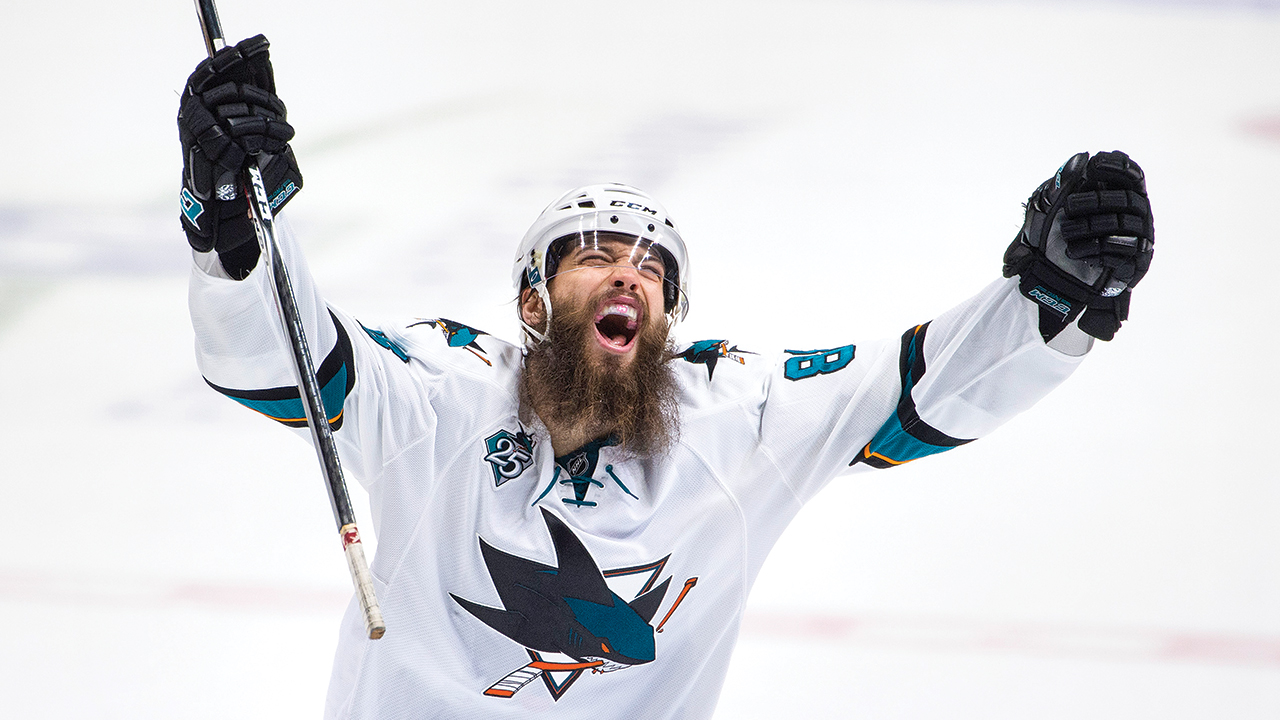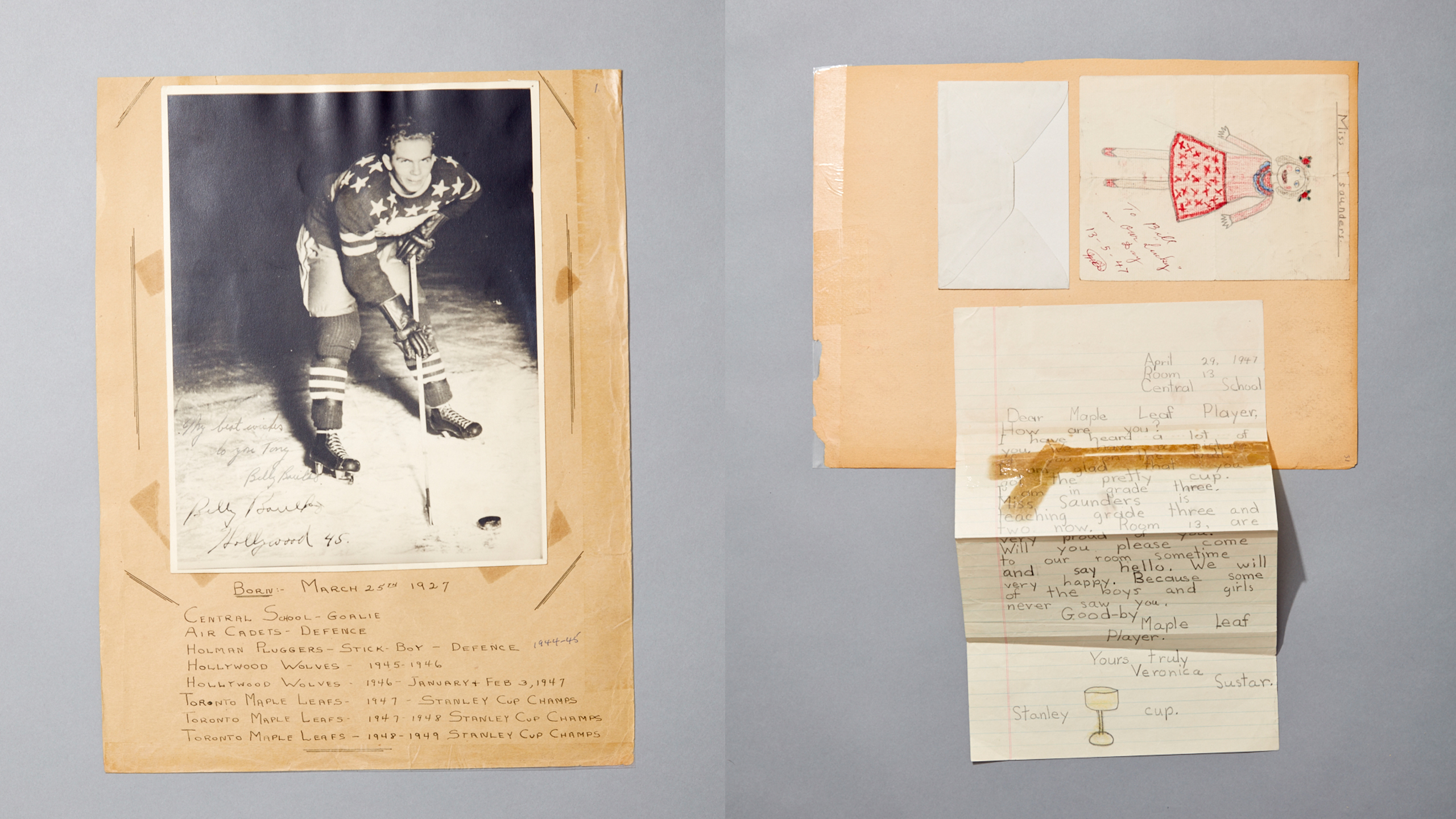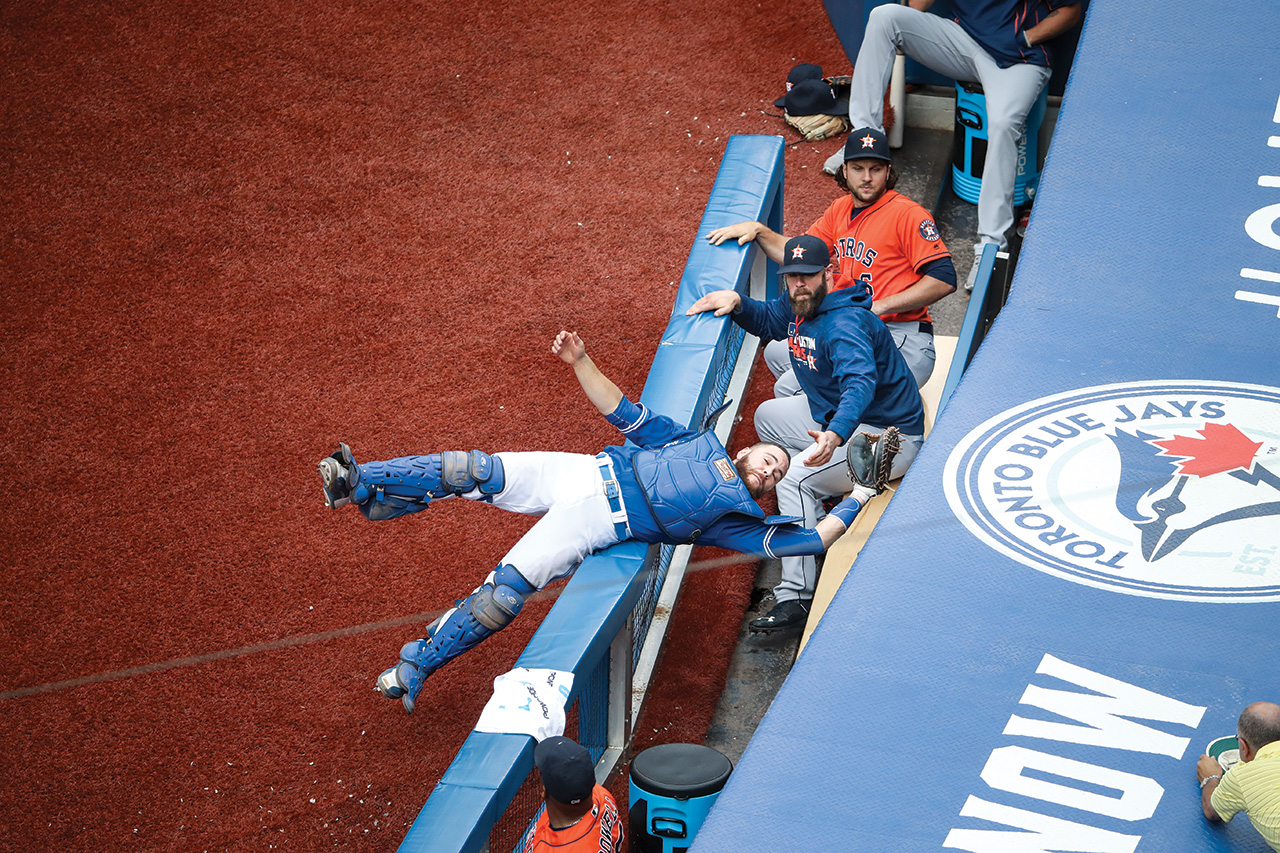
This was the seventh inning of the Blue Jays-Astros game. There was a foul pop-up and it kept drifting and drifting and it was going toward the visitors’ dugout. Russell Martin—he’s known for really chasing balls down with reckless abandon—started in a dead sprint and then appeared to slow down when he sensed the dugout approaching. He took a look, reached over and made an incredible catch.
You can see right beside him is Astros catcher Evan Gattis. He’s watching Martin make this great catch and he’s right beside him there, probably a little green with envy. Martin teetered—he was on the railing, he almost went over it. If he had gone over the railing he would have been out of play.
I knew it was a great moment. It was on all the highlight reels. It garnered a lot of attention.
I was elevated. I was on the fourth level, actually. That’s probably the best angle to capture that moment. I guess I was in the right place at the right time. —As told to Kristina Rutherford
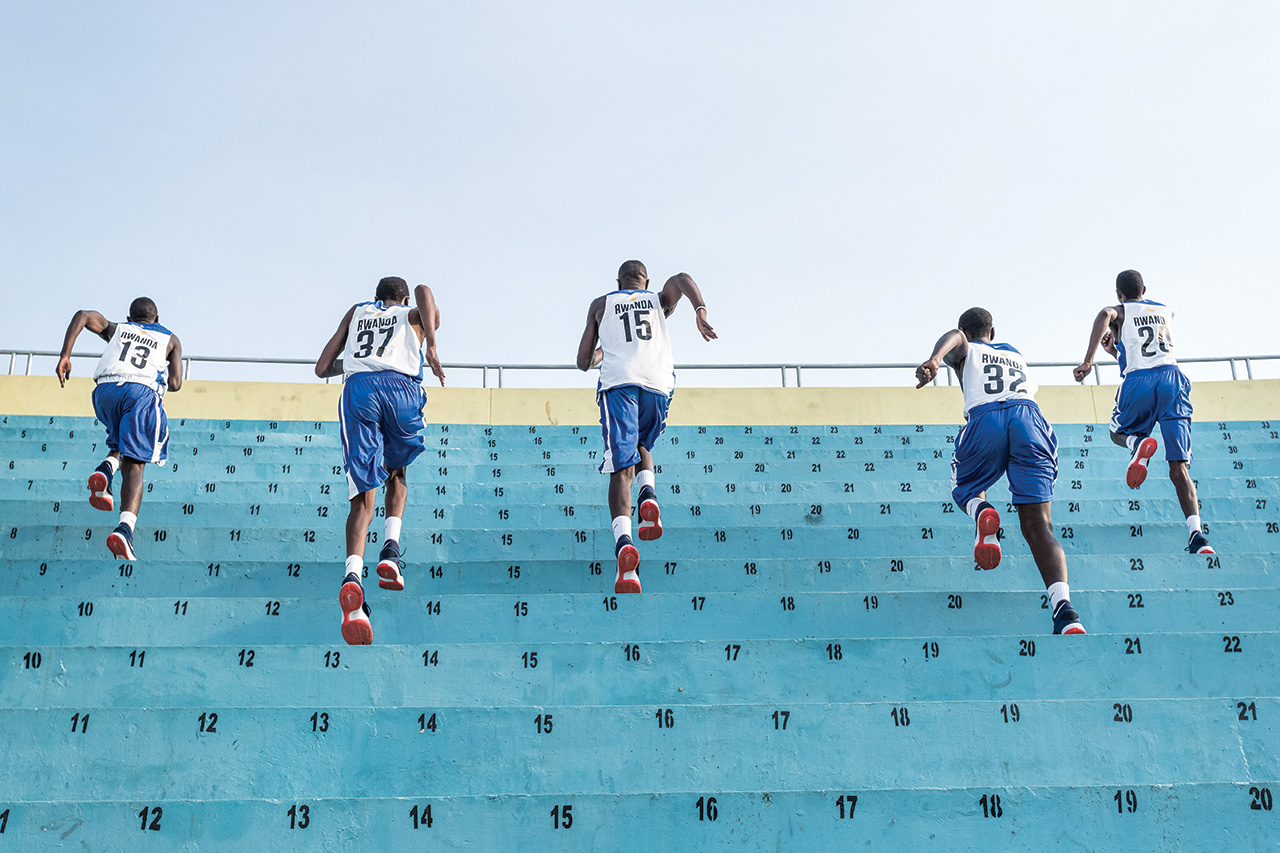
I knew exactly what I wanted to capture here. The sun was going down, and the design of Amahoro Stadium in Kigali, Rwanda, was perfect for the shot. The stadium—which was a safe place Tutsi refugees could go during the genocide—is unique because the stands are yellow, blue and pink; it’s amazing. I like the dynamic of the photo, seeing these kids participating in a Giants of Africa camp. They’re giving all they have in drills they’re not accustomed to doing with their local teams because their coaches just don’t know about them.
One silly thing I enjoy is the numbers being everywhere, including all over the stands. Basketball is a sport of numbers. The kids have numbers on their backs, they’re trying to be the best, to reach the No. 1 spot, and they’re always being measured by how many points they can score, how many push-ups they can do, how fast they are. —As told to Ryan Dixon

I’ve been shooting hockey for 40 years. The first camera in the net was in the 1960s. I started in the early ’70s, but didn’t start with a net camera until around 1980. Here I placed a camera with a fish-eye lens inside a protective box that was attached to the back of the net. Using a remote transmitter, I trigger the camera whenever there might something usable in the image.
I was at the other end of the ice, 190 feet away. I saw the scramble in the net and just leaned on the button. When I looked at the images, it was sort of like the goalie amongst the tree trunks in the crease. I like the way Luongo is off to one side, unaware of what’s going on above him. I don’t think he was that certain, except that he was getting pushed out of there. You don’t see a crowd like that too often, so I thought I had something special. —As told to Dan Robson

At the Olympics, the hardest thing for a photographer, aside from a lack of sleep, is trying to get something unique. This photo represents that for me. I visualized it three hours before, when I walked into Maracana Stadium. The place is legendary. It’s like hallowed ground. I felt like I had to convey that it was really special. The stadium had to be a big part of the photo.
When the Brazilian women scored against China, they celebrated right in front of me. I had a wide-angle lens on the camera around my neck, hoping for that chance.
This is the story of Brazil hosting the world. They are football-mad there. Nothing else matters to them. Normally your inclination is to grab a long lens and zoom in as close to the action as you can. But to me, the stadium was as much a personality as the players. That’s the picture I wanted to make. —As told to Dan Robson

It was just before the playoffs. I was behind the row of folding chairs. I was basically sneaking around the crowd, right by the scorer’s table. Biyombo was a fan favourite at the time. He was having a good game, and he was getting ready to check in, and in the break he was talking to a fan. I don’t know what they said, but it made Biyombo smile and he put his hand out to give the fan a fist bump.
I thought it was a really cool moment. I didn’t know how good the photo would really be.
A couple games before that a good friend messaged me and said, “Make sure you get a shot of Biyombo for me.” He wanted a shot of him for his lock screen or something like that. He’s like, “Yo, I want a shot of Biyombo, I wanna put it in my room.” Something silly like that. I don’t know if he was serious or not. I didn’t get any good shots of him two games before that, so that’s why I focused on getting him that game.
Any player who shows a lot of emotion like Biyombo, he’s more interesting to shoot. There’s never a dull moment. —As told to Kristina Rutherford
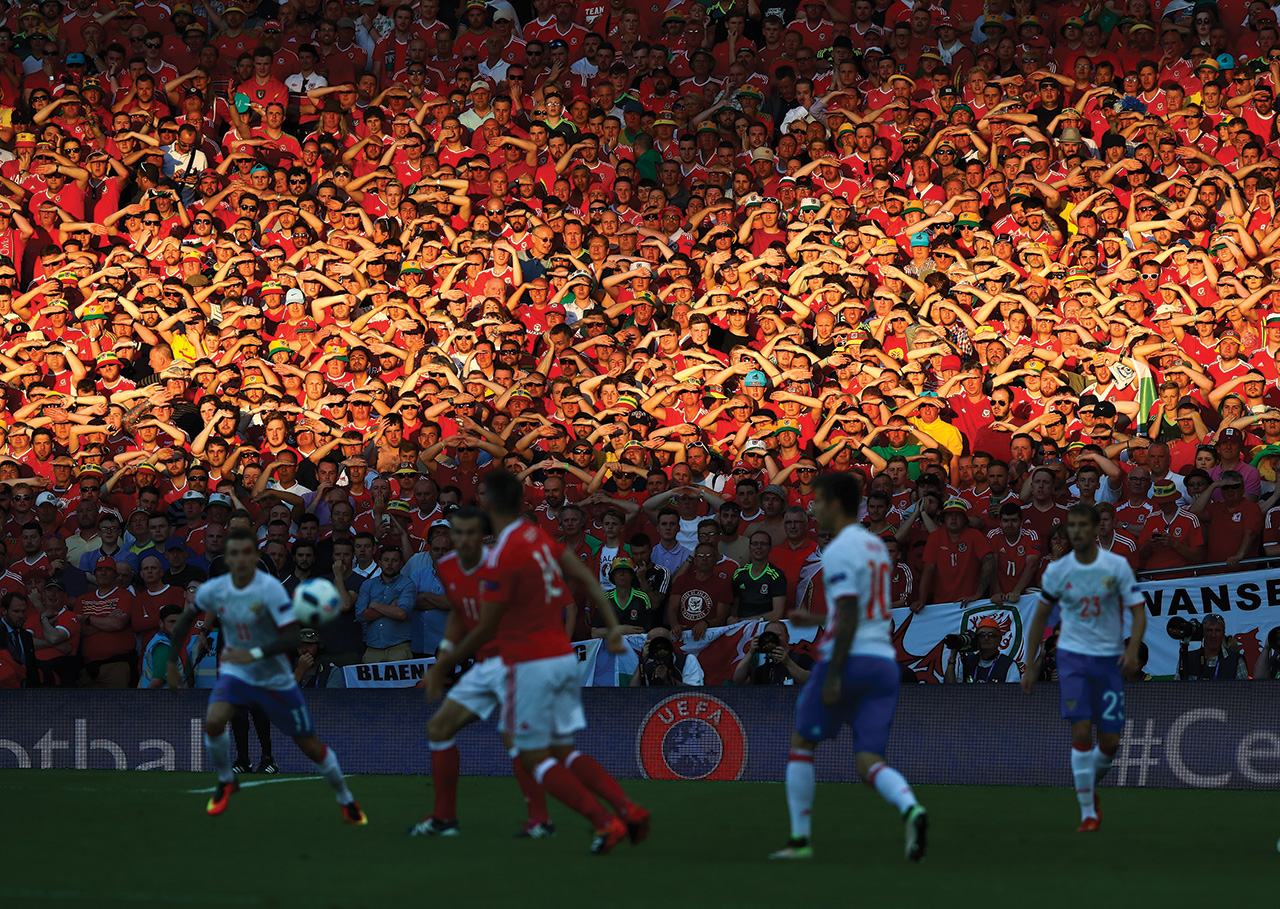
I knew I was only going to have so long to shoot something in this golden light. I ignored the football match for about 15 minutes while that light was on, just waiting for the action to come into that part of the frame. It’s football—you never really know where the action is going, so you hope for the best. The focus and exposure were both set for the fans.
A minute later, the sun was gone.
I wouldn’t normally expect to call a football-fan photo one of my favourite shots of the year, but these were exceptional circumstances. These are Welsh fans watching their team play in a major tournament for the first time in decades. Some supporters of other countries took human evolution back about 50 years with the way they behaved during the Euros. The Welsh fans were just there celebrating their team. It was just a happy bunch of people. —As told to Ryan Dixon

To get this picture, I mounted a camera on a catwalk above centre court. You can’t do it right in the middle of the arena, because there’s a giant scoreboard. I used a super clamp and some rigging gear to secure the camera. I did it the day before, and you obviously have to be extremely careful; it would be a really bad situation if anything ever fell onto the court.
I control the camera and strobe lights remotely from my usual spot on the floor. Basically, once the referee tosses the ball, you watch the players, and as soon as their heads move up and they start to leap, you push the button and hope for the best.
Because of the strobe lights, you only have one crack at this shot. The University of Connecticut women have been so dominant over the years, and I like the fact you can see the player, Breanna Stewart, winning the tip and sort of kick-starting things for her team. —As told to Ryan Dixon
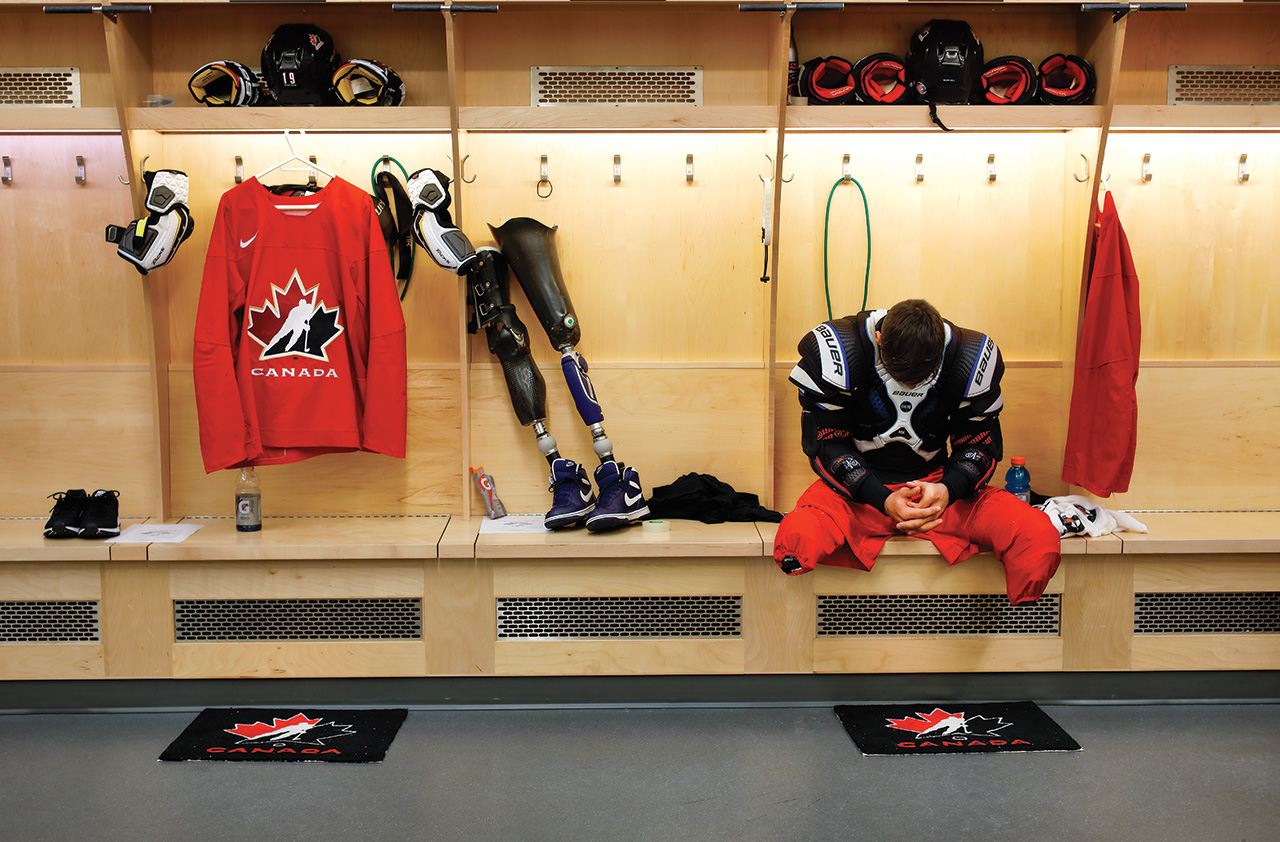
His name is Mathieu Trudeau. This was during a Team Canada selection camp. It was a big, important time for him. These are big games for these guys. Some of them are going to get cut, and it’s going to be a really big disappointment. So I went into the dressing room before the game and looked for little moments like these.
Every great athlete does this. They get to the rink or the stadium and there’s a moment where things change. Where they go from being a regular guy to all of a sudden the game face comes on and things get serious. And they start zoning in. You think about it, it’s amazing. This guy comes in and takes off a couple of limbs to get ready to play. And then he straps himself into one of the sledges and he goes to work.
This was my first time going into the dressing room with the sledge team before a game, and I didn’t really know what to expect. But after being in there with them, I have a huge new respect for these guys. I felt privileged to be around them. I knew they were great athletes. But they’re ripped. And it’s full-on intensity in there. They’re getting ready to represent their country. It was great to be a part of that. —As told to Arden Zwelling
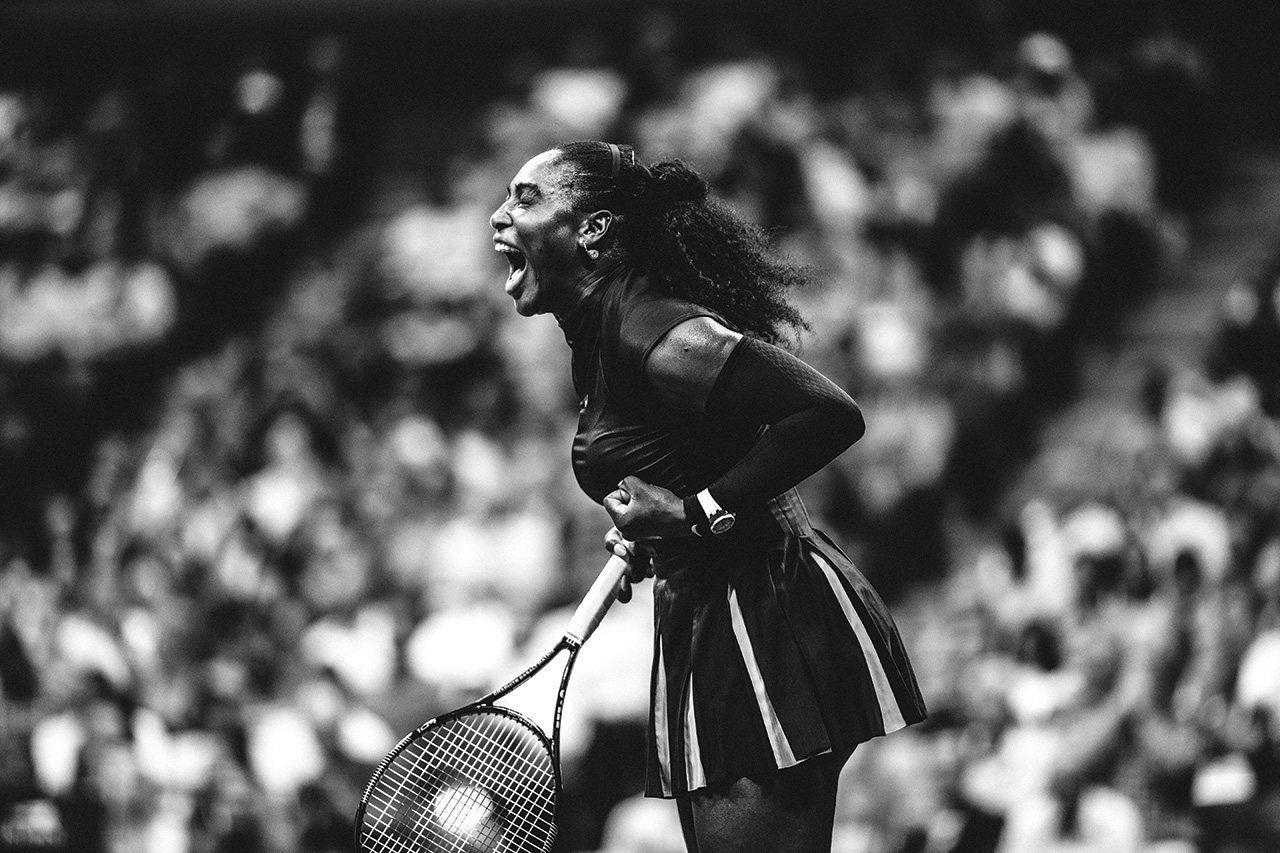
This was during Serena Williams’s US Open semifinal against Simona Halep. Every match until that point had been basically a walkover. She was doing everything really easily. I’d been shooting her every match, and there had been very little emotion. But this was the first time she won a crucial point—and she really gave it up.
I’ve been shooting her for 15 years. She’s a very consistent person and she’s very good. But she also doesn’t get too emotional if she’s playing someone who’s obviously well below her level. So when she gets a hard opponent, you can feel that she has that extra bit of intensity, and you can kind of anticipate when a big burst of emotion is coming.
Serena plays like no one else. When she’s on, it’s kind of ridiculous how she hits the ball. How intense she is. I don’t know of any other athletes as focused as she is when she’s in the zone, and as emotional. I think the photo kind of shows that. —As told to Arden Zwelling

It was in September. David Ortiz had only a few games left playing at home. He was definitely the news, the event—people were trying to see him for the last time. I was in the stands, trying to get a different angle.
Lo and behold, I saw this little boy with an Ortiz jersey. I just sat there waiting for something to happen. The background was perfect. The fact that the crowd reacted around him and he’s just looking on—it was an ideal picture of the moment. To see that admiration from a young kid was pretty cool.
In my line of work, you do a lot of stumbling into nice images. I enjoy those little quiet moments when it’s not peak action—it’s the little shot inside the game. That tells the story. You don’t need a lot of captions.
Fenway Park is a very photogenic place—people are close to the field, and it definitely gives you the opportunity to get great images like that. It’s a classic baseball picture. It’s almost timeless. That shot could have been done in the ’50s and it would be exactly the same thing. —As told to Kristina Rutherford
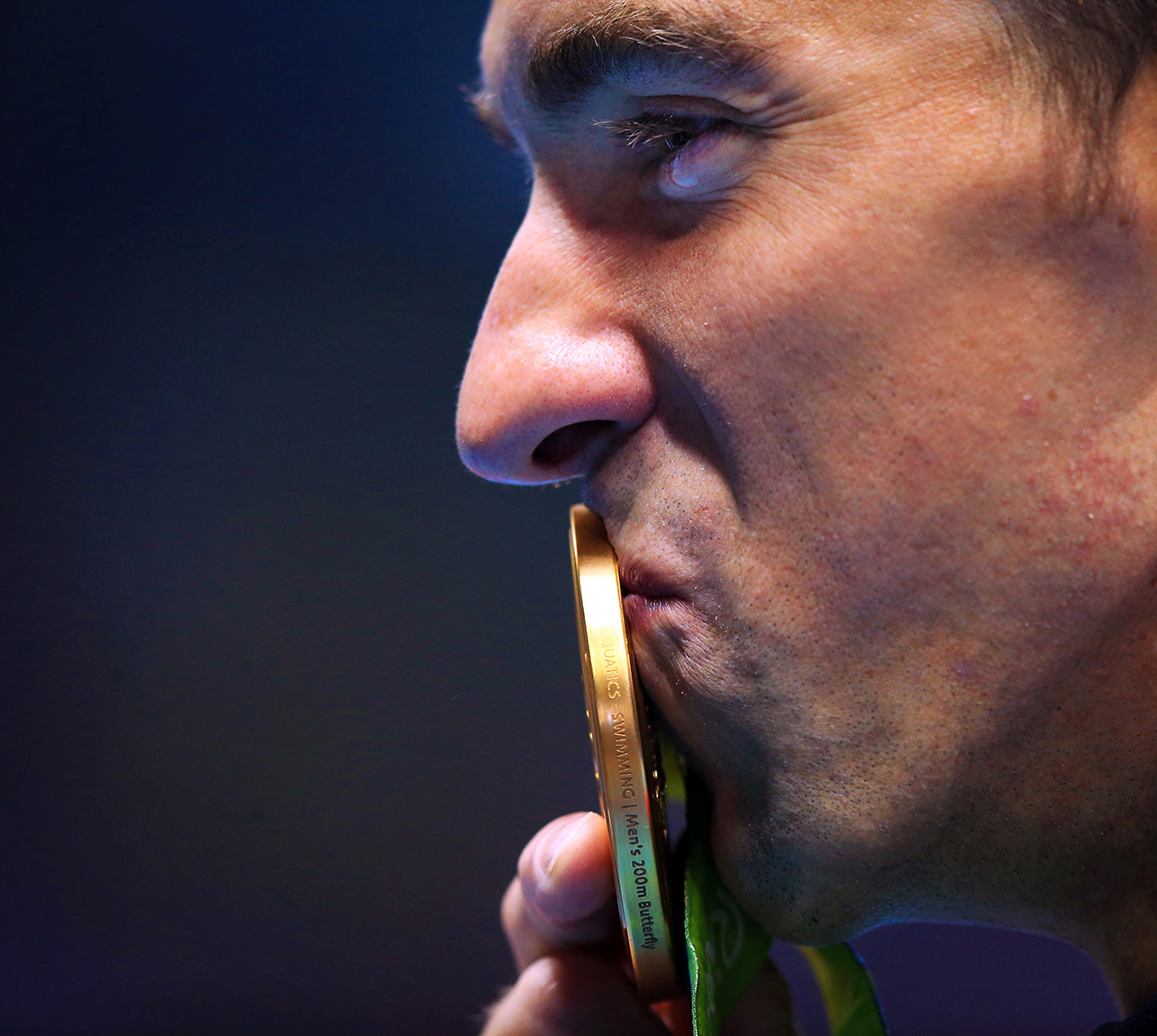
I was looking for something different. I was looking for something special. You know, that’s his signature event—the 200-metre butterfly. And he was looking for redemption. In London 2012 he finished second to Chad le Clos. And he was going to retire after London. But after he lost he basically made a decision and said that wasn’t going to be the end and that he needed to get his gold medal back. And then he got fit again and swam in Rio. And he ended up getting to the final and racing against le Clos again and he got his gold medal back. It was quite a moment for him.
He was a bit emotional on the podium. I just wanted a nice tight picture of him with his medal. And then everything sort of worked out. I got a nice clean background and he kissed the medal. And after I took the picture I quickly looked at it on the back of the camera and I could swear there was a little tear in his eye. And then I zoomed in and there was. So, it was like, “Wow, what a moment.”
It kind of says everything about him. I’ve been shooting him for 10 years now. I’ve seen him win a lot of gold medals. But even for me, and for people who have seen him swim for a long time, that was an emotional moment. —As told to Arden Zwelling
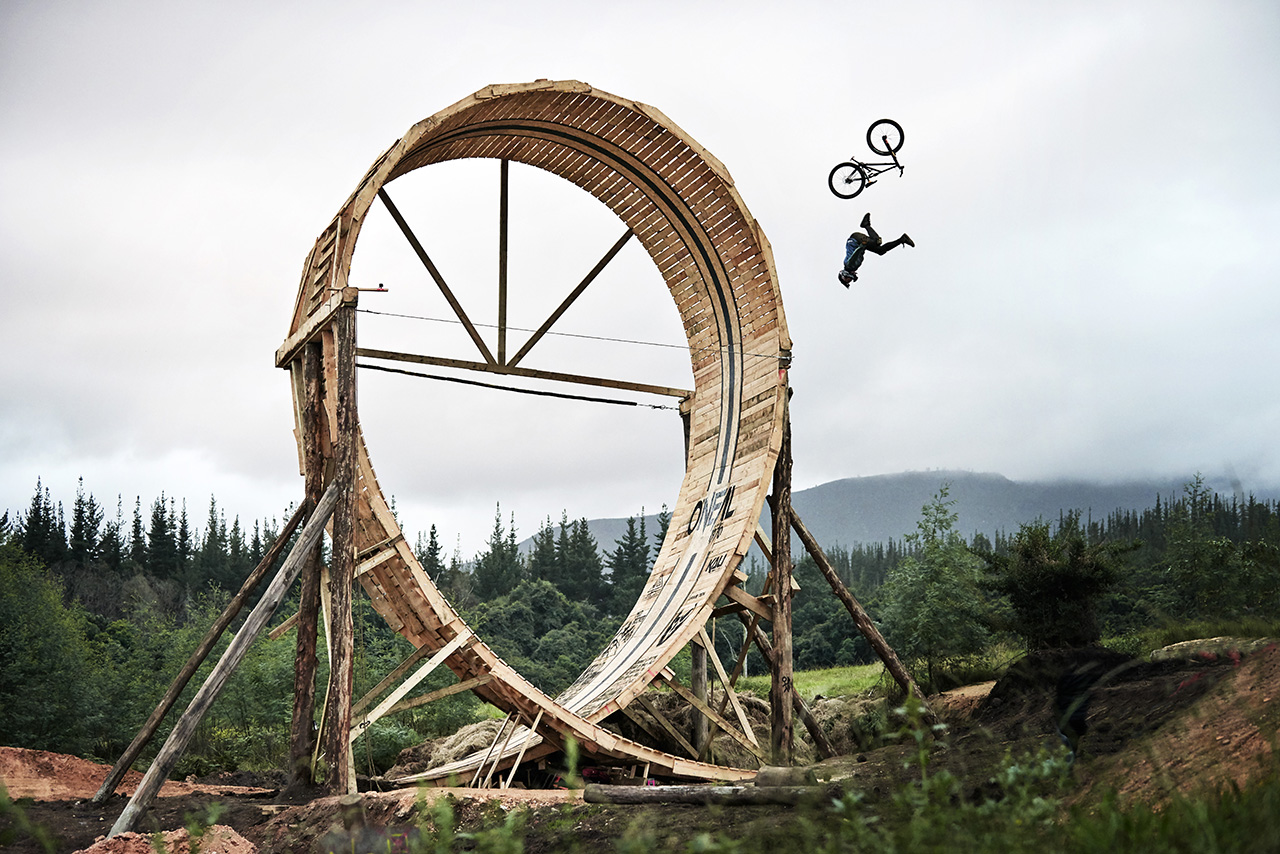
The rider in this photo is my friend, Matt MacDuff. We went to Knysna, South Africa, with the goal to build the biggest loop-de-loop for a mountain bike (12.5 metres). Along with a team of people, we cut the wood, milled the wood and build the loop.
As with anyone who takes photos, I was really concentrating on the picture. But as soon as I realized what was happening, I just kind of dropped the camera and started running. Basically, I thought he was dead. I ran to him and the first thing I heard was, “I can feel my legs,” so everyone was relieved (and MacDuff is doing fine, now). He broke, I think, 12 bones. He actually did a half flip in the air and landed on his feet. He pretty much mashed into the ground like wet pasta.
The thing I love and hate about the photo is he crashed. The picture would have been nice just him rolling around, but it’s way stronger. It just gets to you. You understand the consequences; you know it’s going to be bad. —As told to Ryan Dixon

I decided I wanted to do a photo story on arm wrestling and my subject wound up being 75-year-old Norm Devio. I followed him around, photographing what he did at this tournament. I also spent some time at his home and we took a two-hour drive to this event together, so we got to know each other pretty well.
With less mainstream sports you have greater access. This was in a bar/restaurant in Maine, so I was kind of free to get right up next to them. If I was shooting an NFL game, I’d be using a telephoto lens and I’d be pretty far from the action. This is a more intimate photo.
I think the sailor tattoo on the arm of Norm’s opponent is sort of classic and gives it a timeless feel. I also like the rim lighting on Norm’s face. It makes him pop out from the background. The moment is key, though, because he’s about to pin him. —As told to Ryan Dixon

I was in the crowd for the actual race, and I was walking to the podium to take a front-on photo. As I was going there, I stopped and looked. It was a moment that looked normal, but when I saw it after, I thought it showed how in a moment you can go from being 16-year-old Penny Oleksiak to being broadcast across the world.
As a photographer, it spoke to me visually because it’s not something you usually see. But it spoke to me more as an athlete, because in that moment, her life was changing forever. I won a gold medal in Beijing for rowing, so it spoke to me about how the media is connected to athletes, and how it can turn in an instant.
It took me back to competing in the Olympics in Athens, when we were expected to win and didn’t, and were confronted by the press right away. It was a disappointing result, and I remember the press being there, and me not really having the ability to deal with it. In Beijing it was the same, but it was all happy. —As told to Dan Robson


